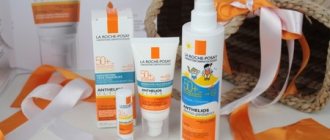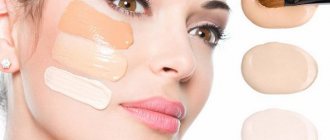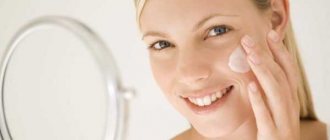How to apply sunscreen on your face? How to protect yourself from ultraviolet radiation as much as possible? With the onset of the beach season, these questions worry women more and more. Protective cosmetics will help you get the necessary hydration and create a barrier to the sun's rays. Following all the rules of application, you are guaranteed to get an even tan and provide complete care. It is not enough to distribute the selected cream over the skin, the main thing is to do it correctly.
Why use sunscreen for your face?
Every woman knows about the harmful effects of ultraviolet rays on the skin. Gone are the days when tanning was considered beneficial for the epidermis. The danger of ultraviolet radiation is the destruction of cells, the effect on metabolic processes, and the excessive synthesis of melanin.
Short ultraviolet rays cause darkening of the skin, and with it dehydration and thinning. A set of cosmetic measures is required to get your skin in order. Prolonged exposure to the sun is fraught with the appearance of freckles and age spots on the skin.
Ultraviolet rays with a high degree of penetration disrupt cell functions and contribute to the development of the pathological process. As a result, skin diseases appear and cancer cells form.
Sunscreen prevents the penetration of ultraviolet rays, creates a protective barrier, prevents dehydration, and provides complete care.
Technique for applying sunscreen to face
Cosmetologists advise using these creams after a set of day care procedures. A small amount of cream is enough for even application. You must first cleanse the skin using gel, tonic, milk, foam.
- The product is applied pointwise to the forehead, cheeks, nose, and chin. Apply with gentle movements over the entire surface. It is necessary to synchronously move to the sides from the center of the forehead and nasolabial folds. To avoid damaging the skin, any active rubbing should be avoided.
- Optimally you need to use your fingers. Light tapping will activate blood circulation and ensure uniform application. You should not wait for complete absorption; the procedure should be carried out immediately after applying the product. The surface of the face should be covered with an even thin layer.
- The skin will receive full protection 20-30 minutes after application. It is recommended to go outside after this period.
Sunscreen cosmetics differ in composition and protection factor (SPF from 15 to 50+). This determines the frequency of use of the protective layer of cosmetics. Using a cream with SPF 15, the skin is protected from active sun for no more than an hour, SPF 30 - two hours, SPF 50+ - three.
Time spent in the sun is calculated continuously or cumulatively. After intense exposure to ultraviolet light on the skin for 2 hours, it is necessary to “feed” it with a new portion of cream.
How to use Sanskrin in the city so as not to harm yourself or go crazy. Or get off
Do I need to renew sun protection every 2 hours? Do you need to wash your face after this? What to do if you have makeup on your face? Let's figure out how to find a compromise between safety and a happy life without OCD.
Sunlight is made up of three types of rays: UVA, UVB and UVC. The latter are absorbed by ozone and almost never reach the earth's surface. UVA and UVB travel through the atmosphere.
UVA rays damage the skin at all levels from the epidermis to the dermis and negatively affect collagen fibers, elastin, capillaries and cell DNA.
The depth of penetration of UV rays into the skin according to WHO
UVB rays also damage DNA, promote photoaging and the formation of precancerous cells.
Protection against UVB is indicated on the packaging by a number after the SPF, and against UVA by the UVA sign in a circle or pluses after the SPF factor.
When we go to the beach, everything is clear: apply Sanskrin thickly and often. And in the city? Zinc putty is useful, but looks strange at a business meeting. Is a thin layer of foundation enough? Experts helped us understand the topic:
- Ekaterina Rusinova is a marketing manager for the cosmetic raw materials division of the international chemical concern BASF.
- Alexander Antonov is a cosmetologist, trainer of the Cosmedix brand.
- Tatyana Trotsenko is a dermatologist, cosmetologist, leading expert methodologist at Heliocare.
- Nadezhda Frolova – training manager at Lancaster.
- Evgenia Reshetnikova is a dermatovenerologist, cosmetologist, and head of the medical department at Sesderma.
- Ekaterina Shkuratova is the brand manager of Isdin in Russia.
- Alytana Byzaeva is medical expert , cosmetologist and dermatologist.
- Alexander Prokofiev is a medical expert at La Roche-Posay , a dermatovenerologist.
- Oksana Larionova is the head of the training department of Uriage in Russia.
How much sunscreen should you apply to your face?
Ekaterina Rusinova: When testing for compliance with SPF and UVA-PF declared, standardized methods ISO24444 and ISO24443/ISO24442 are used. According to them, sunscreen is applied in an amount of 2 mg per square centimeter of skin . Therefore, in order for the degree of protection to correspond to what is written on the package, Sanskrin must be applied to the face (and to any parts of the body) in exactly this amount. This is true for both physical and chemical filters.
Details of how testing is carried out can be found in the recommendations of the EU Commission.
But let's figure out where this 2 by 2 rule came from? In the late 1970s, the United States, Europe, Australia and Japan decided to standardize the methods by which SPF products should be tested. On September 4, 1978, a meeting was held where options for this procedure were considered. Specifically about the applied amount, 2 options were proposed: 1 mg per 1 cm2 and 2 mg per 1 cm2. Then all this was researched, discussed, and the time for collecting comments was repeatedly extended. (On the FDA website there is a history of all changes in the regulations starting from 1978.) And on May 12, 1993, a document was released which stated that the recommended amount of Sanskrin is 2 mg per 1 cm2, since 1-1.5 mg will not be able to guarantee protection. For those interested, the protocol contains all the pros and cons) - pages 350 - 355.
We live according to the regulations of the European Union, which adopted these rules.
Now let's count:
- The body area of an average person (170 cm, 60 kg) is 1.695 m2, which is 16,595 cm2;
- face area – 3.5-4% of the body area, that is, 580 cm2;
- This means that an average face needs 1200 mg of cream;
- the average density of the cream is 0.96 g/cm3, based on this we convert mg to ml (1200/960) and get 1.25 ml of cream for the entire face. And at the same time we understand that the higher the density of the cream, the lower the quantity will be. True, not much.
Do you want to get confused and count down to the milligram how much Sanskrin you need? Well suddenly











